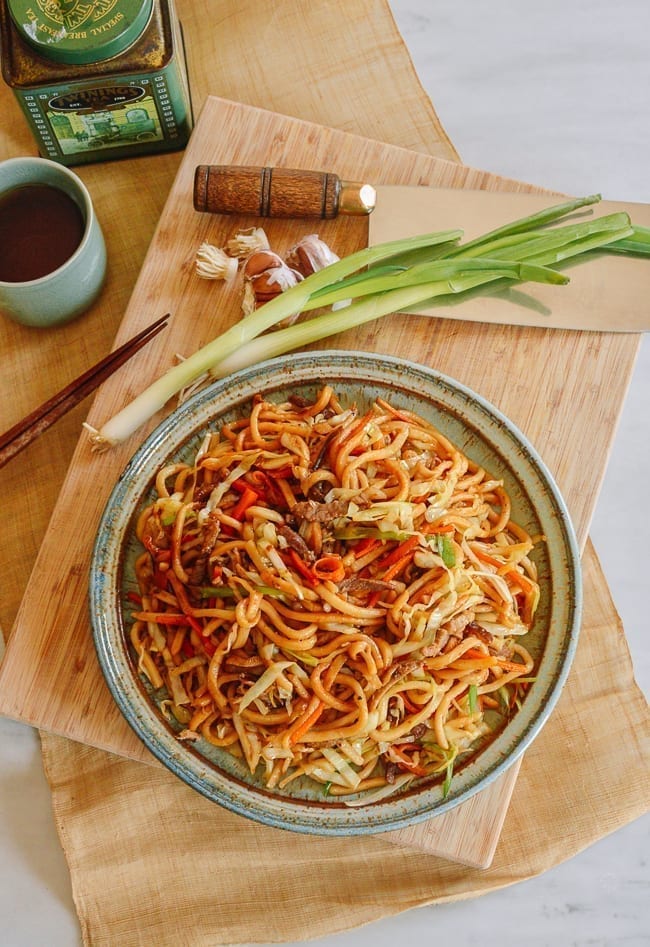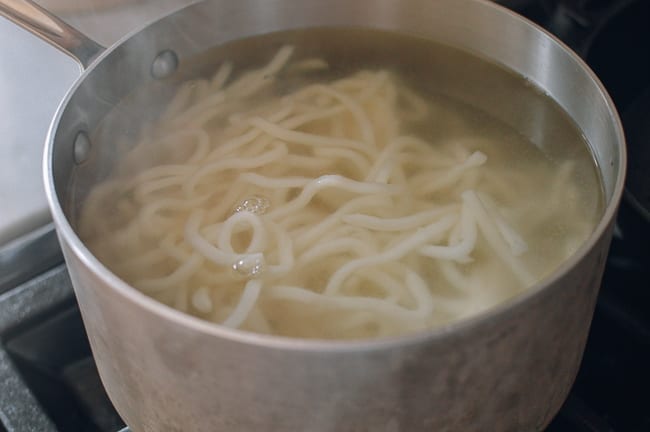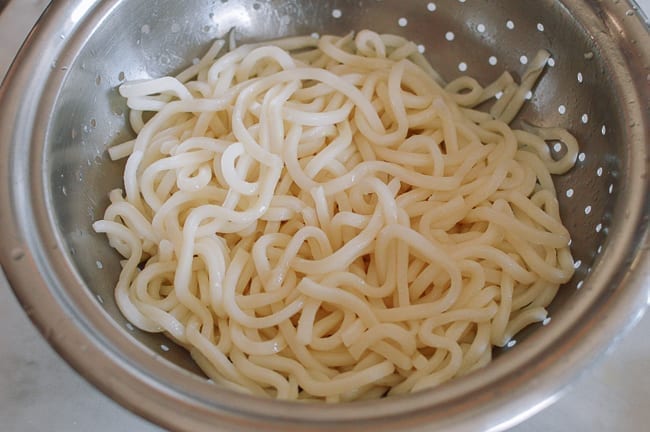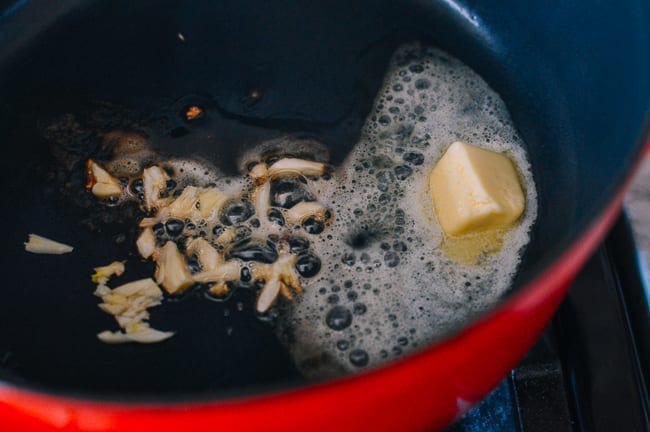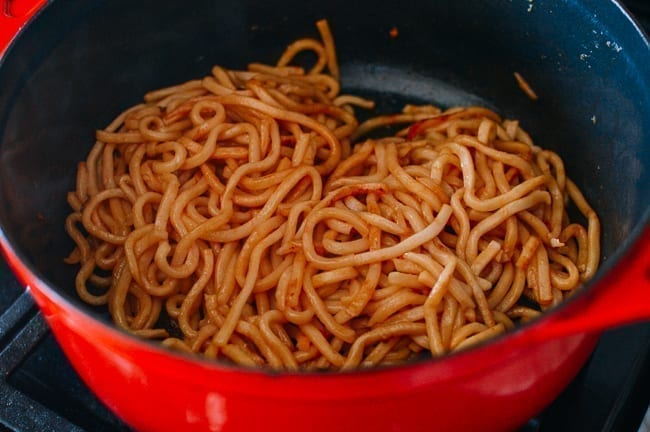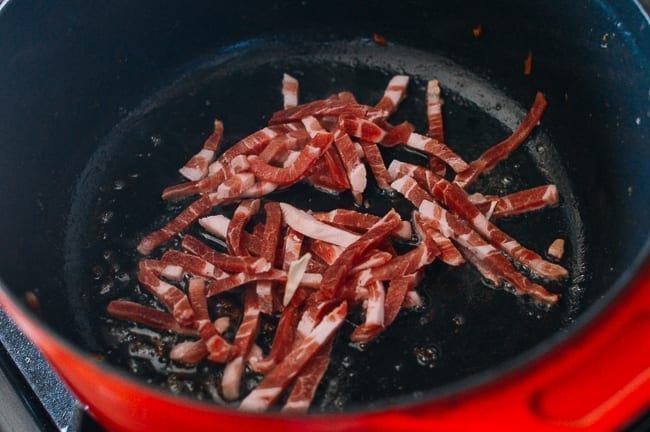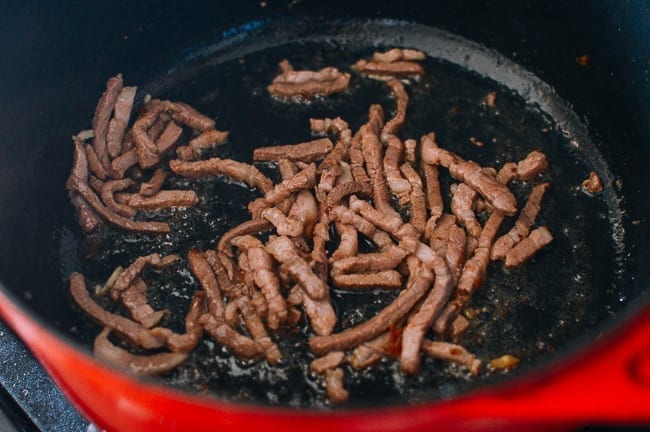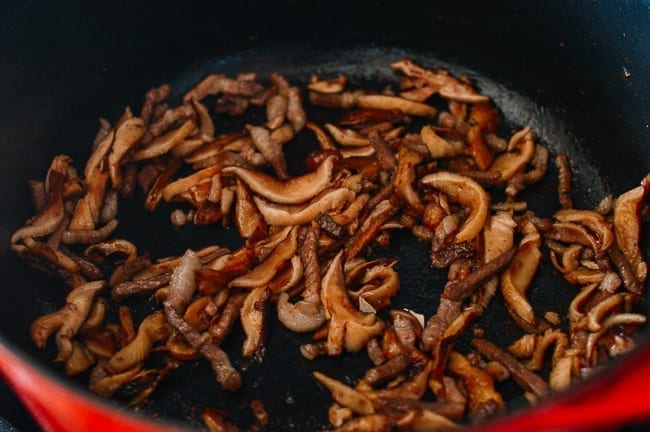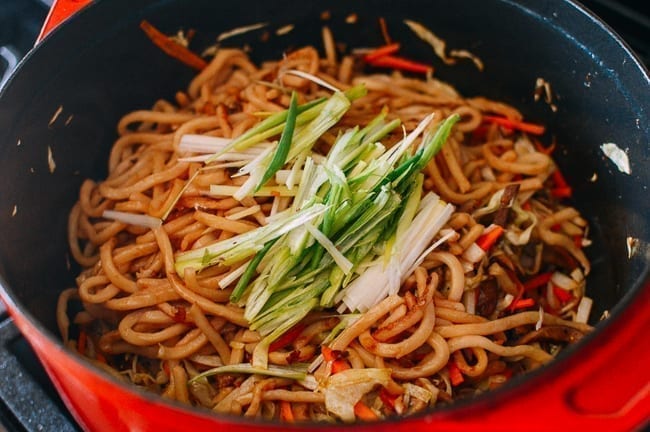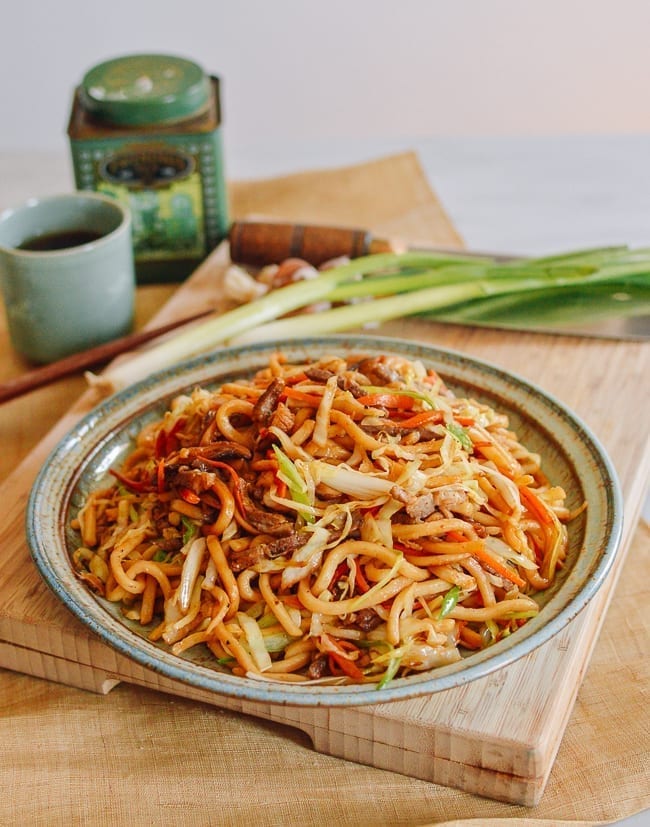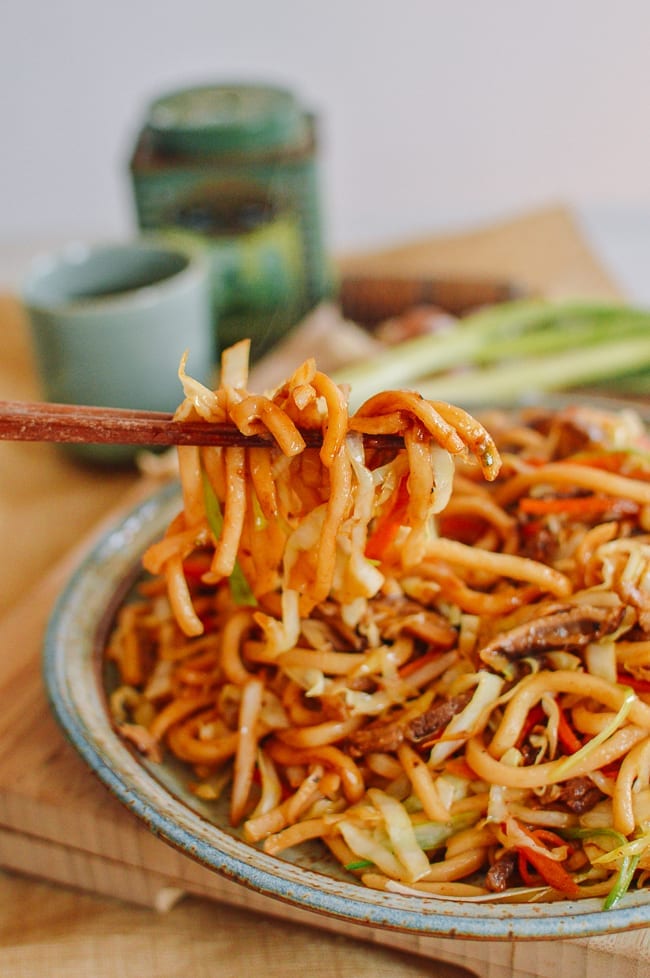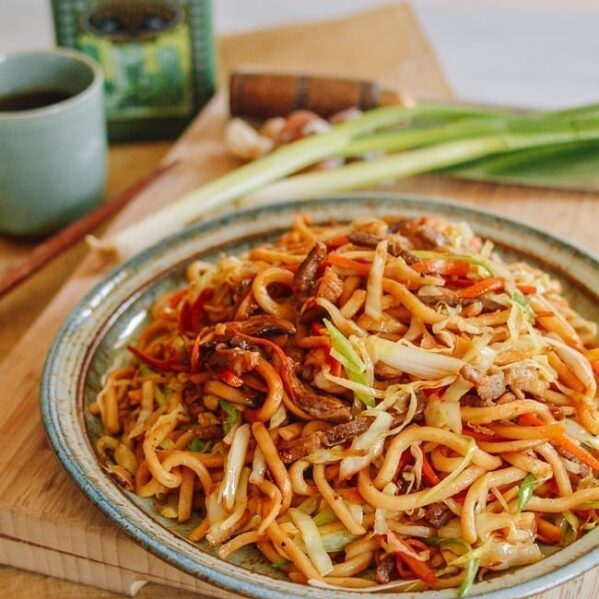What Is Yaki Udon?
Yaki udon in Japanese translates to “fried udon.” It is a dish of stir-fried udon noodles with shredded meat, julienned vegetables, soy sauce, and mirin. This dish is similar to yakisoba, differing only in terms of the type of noodle used. (Check out our Chicken Yakisoba and Vegetable Yakisoba recipes for more details.) You can easily pick out udon noodles from other varieties, because they are very thick! While udon noodles are often served in soup, their thickness makes them great for stir-fries as well. There’s actually a similar dish in Chinese cuisine––Shanghai Cu Chao Mian, or “thick fried noodles.” The thickness of the noodles gives them a pleasantly chewy texture, and also lets them cling to sauces and seasonings!
What Type of Udon Noodles to Buy
You have three options when it comes to buying udon noodles at the Asian grocery:
Fresh udon noodles in the refrigerated section (usually in vacuum sealed packaging) Frozen udon noodles Dried udon noodles
While any udon should work for this recipe, you may be surprised to learn that the best option is frozen udon noodles. The refrigerated udon noodles are less elastic than their frozen counterparts, making them prone to breakage while stir-frying. (The one exception seems to be the brand we used in our Shanghai Fried Noodle Recipe, Twin Marquis. Twin Marquis makes a variety of Chinese-style noodles, as well as a Japanese udon product. However, it’s also a regional brand based in New York (meaning you might not find this brand in your area). Also, in our experience, their udon can be hard to find in stock.) Dried udon noodles would be the best backup option if you can’t find frozen noodles, but it’s important to keep in mind that the dried versions aren’t quite as “bouncy” in texture. They’re also usually on the thinner side and a slightly different shape overall. The moral of the story? Next time you’re at the Asian market, head for the freezer section to find udon noodles. If you come up empty, try the dried noodle aisle.
Don’t Skip the First Step
I added an extra step to this recipe that you won’t necessarily find in other Japanese yaki udon recipes. However, I think it really makes these noodles even tastier! Before stir-frying anything, you’re going to melt together butter, garlic, and dashi powder. Then, you let the udon noodles fry in the garlic/dashi butter until they crisp up a bit on the outside. Then you proceed with the regular steps to put together the recipe.
Dashi powder (AKA dashi granules) is kind of like chicken powder or other bouillon-like ingredients. It’s basically the concentrated, powdered version of dashi stock, made with kombu (dried kelp) and katsuobushi (dried smoked bonito flakes). We’ve been using it a fair amount lately, especially Kaitlin, who has been using it to make quick bowls of seaweed egg drop soup! The minute the concentrated dashi powder hits the butter, a smoky umami aroma fills the air. The butter mellows it out, while the garlic adds additional flavor. This initial noodle frying step also “seals” the noodles, making them easier to stir-fry in the dish later. Trust me on this one. Okay, let’s cook!
Yaki Udon Recipe Instructions
Start by bringing a large pot of water to a boil. Add the udon noodles. Boil for 30 seconds – 1 minute to loosen them. If using dried noodles, cook according to package instructions.
Drain, rinse in cold water to remove excess starch, and drain thoroughly again. Set aside.
Place a large Dutch oven, non-stick pot, or large cast iron skillet over medium heat. When the pan is heated, add the butter. Once partially melted, stir in the garlic and dashi granules. Cook for 30 seconds, until the dashi partially dissolves. At this point, the butter should be a light brown color.
Add the drained noodles and toss to coat them in the butter. Cook for 5 minutes over medium heat, until the noodles have dried out and are slightly crisped. Remove and set aside.
Add a tablespoon of oil to the pot, along with the pork shoulder.
Brown the pork until crisp on the edges.
Add the mushrooms and mirin, and cook until caramelized.
Add the cabbage, carrot, pepper, soy sauce, and water.
Stir-fry until the vegetables are wilted, and add the noodles back in, along with the scallions. Stir-fry for another minute.
Serve immediately. You may also garnish the dish with katsuobushi (dried bonito flakes).
